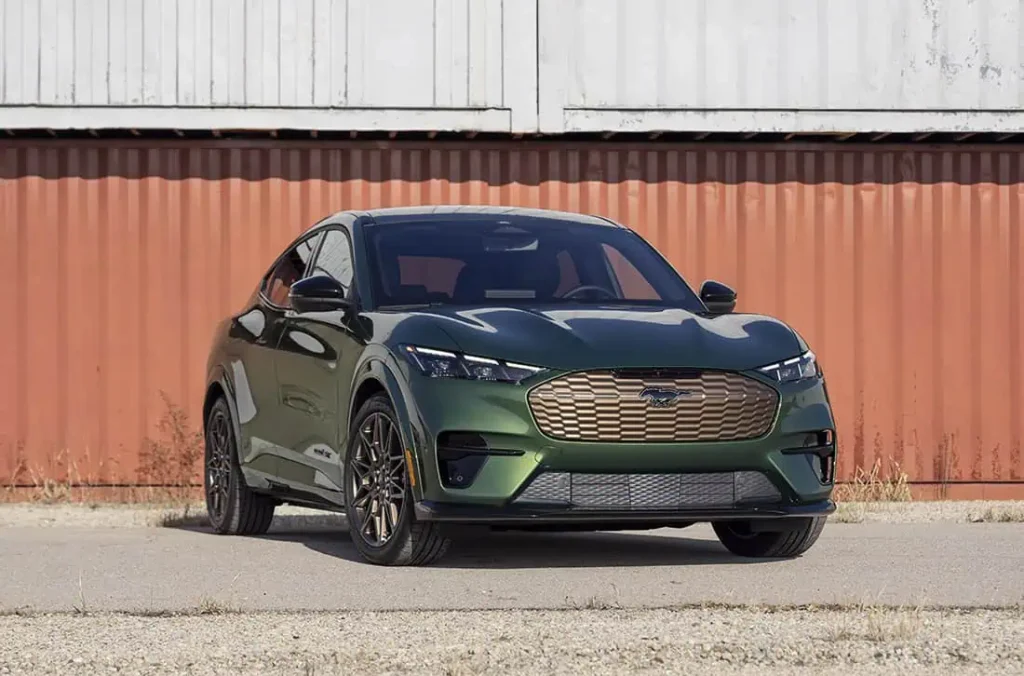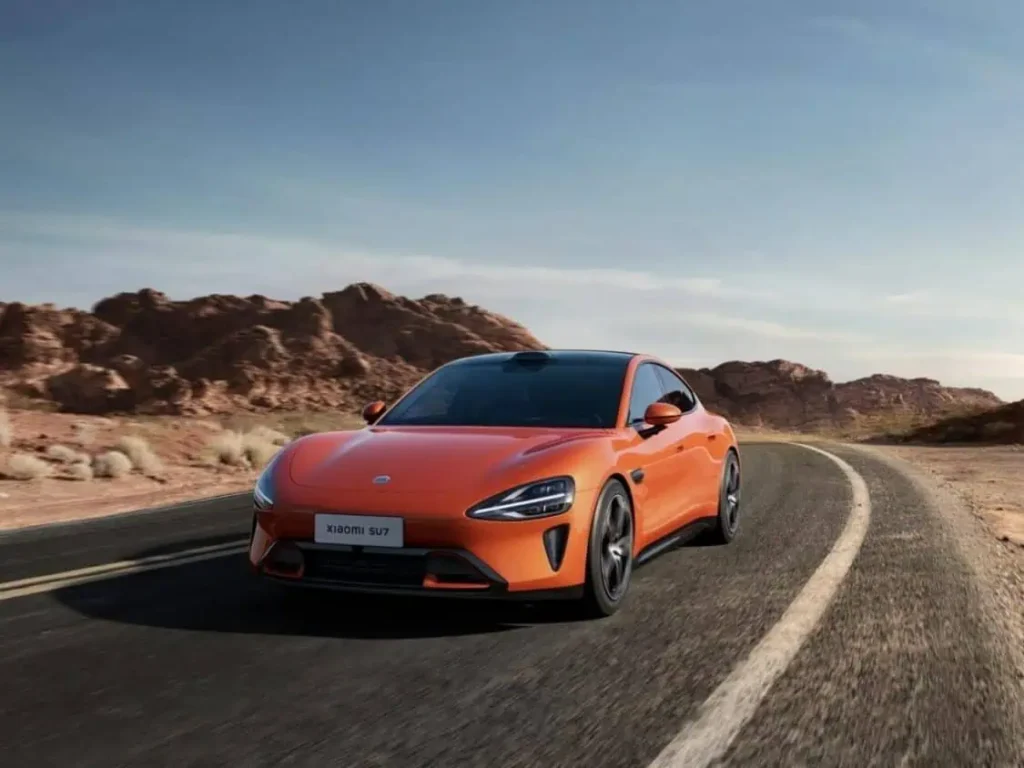Ford, LG Will Move EV Battery Production From Poland to Michigan
In an agreement stating “to capitalize on competitive market conditions,” Ford and LG will shift EV battery production for the Mustang Mach-E from Poland to Michigan in 2025. This reflects the company’s desire to take advantage of incentives provided by the U.S. Inflation Reduction Act (IRA). The move allows Ford to maximize available tax credits, as the IRA grants significant advantages to companies manufacturing EV components domestically. This change aligns Ford with the IRA’s goal of boosting U.S.-based manufacturing for sustainable energy technologies, enhancing the cost-effectiveness of producing EVs like the Mustang Mach-E, as well as creating a large number of American jobs.
In Europe, LG plans to take advantage of incentives in the area by supplying a total of 109 GWh of batteries to Ford for its electric commercial vans beginning in 2026.

“These agreements attest to our experience and expertise in powering commercial vehicles with innovative battery technologies designed to handle extreme user environments,” said David Kim, CEO of LG Energy Solution. “Capitalizing on our local production capacity, we will secure leadership in the European market and deliver unmatched values to our customers through advanced battery technologies that effectively address diverse needs.”
In addition to the LG deal, Ford has a deal with SK On to build EV batteries in Kentucky. This deal will support the production of batteries for the updated E-Transit commercial van and the F-150 Lightning electric pickup starting in mid-2025. This partnership complements Ford’s recent deal with LG, enhancing Ford’s domestic battery production capabilities and aligning with the Inflation Reduction Act’s tax incentives for U.S.-based manufacturing. With SK On’s Kentucky facility and LG’s upcoming Michigan operations, Ford is strategically building a robust, local battery supply chain to meet the growing demand for its electric commercial and consumer vehicles.
GM Surpassed Ford in Q3 EV Sales
Ford’s Q3 results show a solid 12% year-over-year increase in EV sales, with 23,509 units sold. This number is a slight dip from the 23,957 units in Q2 but marks growth compared to the 20,962 units sold in Q3 2023. Notably, the Mustang Mach-E sold 13,392 units last quarter, representing a 9.8% decrease compared to the same period last year. While Mach-E sales were down, the overall year-over-year growth reflects strong demand across Ford’s broader EV lineup, suggesting the company’s EV sales strategy remains effective even with some model-specific fluctuations.
In Q3, GM solidly outpaced Ford in EV sales, reaching 32,095 units compared to Ford’s 23,509. GM’s growth was bolstered by the introduction of new all-electric models like the Chevy Equinox, Blazer, and Silverado EVs, which appealed to a broader audience and drove up its U.S. EV market share to 9.5%, a notable increase from 7.1% in Q2. GM’s Cadillac division is enjoying historic growth with its solid LYRIQ EV and other models.
This robust performance underscores GM’s strategy of diversifying its EV lineup across segments, capturing a larger share of the rapidly expanding EV market. Ford, while seeing steady year-over-year growth, faces growing competition as GM leverages its expanding portfolio to attract more customers.

Ford’s EV Cutbacks
Ford has recently adjusted its EV strategy, focusing more on hybrids and managing costs as it faces challenges with its Model e unit, the part of Ford that focuses on EV production. Key changes include:
Delayed and Canceled Launches: Ford postponed the launch of a new electric pickup truck by 18 months, now expected in 2027, and canceled its planned three-row electric SUV, which will instead launch as a hybrid.
Reduced Capital Spending and Battery Orders: Ford cut its EV capital spending allocation from 40% to 30% and reduced orders from battery suppliers, reflecting a shift in focus toward cost efficiency.
Price Cuts and Supplier Cost Reductions: Ford has lowered EV prices to stay competitive and has asked suppliers to lower costs through efficient manufacturing and reduced capital expenditures.
Job Cuts and EV Losses: Ford has reduced its workforce by 3,000 jobs as it looks to manage losses from its EV division, Model e, which reportedly loses over $100,000 per vehicle sold. CEO Jim Farley identified Model e as a significant financial drain, pushing Ford to reallocate resources.
In line with consumer preferences, Ford is boosting hybrid production, balancing its EV ambitions with an increased emphasis on hybrids to meet current market demand and reduce financial strain.
Jim Farley, CEO at Ford Motor Company, explained why Ford has lost money on EVs. Basically, companies that produce internal combustion engine (ICE) vehicles, along with EVs, have had great difficulty in making their EVs profitable. The reason is that EV production in small amounts is expensive. As we move to mass EV adoption, companies like Ford will move to greater profitability as a result.
In Farley’s “Confessions from a lifelong Petrol Head..” he explained Ford’s EV losses.
Farley said, “It’s true that we are losing money on electric vehicles in the first innings of this transition, largely due to the upfront investment costs. But that too is changing. After all, what major technological leap forward wasn’t challenging and costly at the early stages?”
Farley Creates Significant Controversy by Driving a Chinese EV
Ford CEO Jim Farley made headlines and created a firestorm of controversy by driving a Chinese EV, the Xiaomi SU7 for six months, and saying “I don’t want to give it up.” Farley’s choice of driving a Chinese-made Xiaomi SU7 might come as a surprise, but it aligns with his hands-on approach to understanding competitors. Farley, who is known for his direct involvement in EV development and competitive analysis, likely sees value in experiencing rival technology firsthand.
The Xiaomi SU7 is designed with advanced tech features and affordability in mind, reflecting trends that Farley may be keen on incorporating or learning from for Ford’s own EV strategy. By driving it daily, Farley gains unique insights into the design, user experience, and features that appeal to consumers in one of the world’s most competitive EV markets.

Speaking on the Everything Electric Show podcast, Farley praised the Chinese automaker’s electric sedan.
“I don’t like talking about the competition so much, but I drive a Xiaomi,” he said. “We flew one from Shanghai to Chicago, and I’ve been driving it for six months now, and I don’t want to give it up.”
Xiaomi is best known as a leading smartphone company in China. Xiaomi’s leap from smartphones to EVs is a remarkable pivot, especially with the Xiaomi SU7 as its debut model. Launched just this year, the SU7 sedan has already become a hit in China, with an accessible starting price of around $30,000 and a target of 100,000 deliveries by year-end—a goal that’s especially bold for a newcomer. Xiaomi’s strategy leans on its strong brand recognition, tech expertise, and an existing ecosystem of loyal users, translating its mobile technology success into the automotive world.
Critics Speak Out
Jason Isaac, CEO of the American Energy Institute, O. H. Skinner, executive director of Alliance for Consumers, and James Taylor, president of the Heartland Institute, a free-market think tank, spoke out and showed anger about Farley’s driving of a Chinese EV.
“Jim Farley’s recent admission that he drives a Chinese-made electric vehicle is a slap in the face to the thousands of hardworking employees at Ford Motor Company,” said Jason Isaac, CEO of the American Energy Institute.
“At a time when Ford is receiving billions of dollars in subsidies from American taxpayers to support domestic EV production, it is deeply troubling that the company’s chief executive would choose a Chinese product over an American vehicle his own company manufactures,” he added.
“Of course China has massive advantages when it comes to producing electric vehicles. The lion’s share of critical minerals necessary for EVs are mined in China, the majority of processing of those minerals occurs in China, and Chinese companies pay their workers slave wages,” said James Taylor, president of the Heartland Institute.
“Instead of trying to compete with China for loser vehicles that nobody wants to buy anyway, American policymakers should be championing the gasoline powered cars that Americans have always loved and continue to love,” Taylor added.
“Ford has US-made EVs stacking up in car lots while the Biden-Harris Administration is busy trying to wipe away the majority of cars we drive, propping up the Chinese Communist Party at the expense of American jobs and consumers,” said O. H. Skinner, executive director of Alliance for Consumers.
Ford Still Has a Chance
Ford’s EV losses have been significant fodder for EV critics. The critics above missed two major points. One is that EVs are here to stay and will replace all ICE vehicles. Another is that Farley’s driving a Chinese EV makes sense, as he is focused on making Ford’s EVs competitive and one way of doing that is experiencing first-hand what Chinese EVs have to offer.
Many EV experts believe its too late for Ford to be a major player in the EV industry, but EVinfo.net disagrees. In the US, electric vehicles haven’t hit mass adoption yet, but we predict mass adoption will come soon. As more buyers transition to electric, Ford will be able to sell more EVs and make its EV business more profitable. Companies who have been slow to release electric models will have a growing number of EV drivers to offer their products to. EVinfo.net highly recommends Ford’s Mustang Mach-E and Lightning Pickup.

Electric Vehicle Marketing Consultant, Writer and Editor. Publisher EVinfo.net.
Services